This post may contain affiliate links. If you make a purchase through a link, I may receive a small commission, at no cost to you. These commissions help keep this website up and running, and I thank you for your support. Read my full disclosure here.
Disclaimer: This is not a sponsored post, I paid for this trip myself. All recommendations and opinions are my own.
Day 1: Getting to the Isle of Skye
Our trip to Skye was part of a glorious two week self drive holiday around Scotland. We started our day in Glencoe, where we had spent several (wet) days hiking in the beautiful mountains. Following a scenic morning drive, we went on to explore Glenfinnan and famous the Viaduct that was featured in the Harry Potter movies, before finally heading onto Skye. The long light hours during the Scottish summer enabled us to pack a lot into our days.
Skye is the largest and northernmost of the major islands in the Inner Hebrides of Scotland. About a third of the residents are Gaelic speakers. The island’s famous for its dramatic rocky slopes called the Cuillen range, which creates a breathtaking backdrop. The island has a long history of occupation, beginning at the Mesolithic period. At one time is was under Norse rule, and for a long period it was dominated by Clan MacLeod and Clan Donald. However, the 18th century Jacobite risings led to the clans being broken up and the land cleared for farming sheep.
There are three ways to get to the Isle of Skye by car. The first option is the ferry from Mallaig to Armidale. It takes about 30 minutes and is reasonably priced. During the busy summer months the ferry can book out, so it might be best to book in advance. The second option is a ferry crossing the Kyle Rhea straits at Glenelg. It’s only about 600m wide, so doesn’t take very long to cross. However, we ended up taking the third (and free) route which is crossing the bridge at Kyle of Lochalsh. If you need supplies, then I recommend stopping here at the Co-op supermarket beside the bridge entrance. There are limited options on the island outside of the main town of Portree.
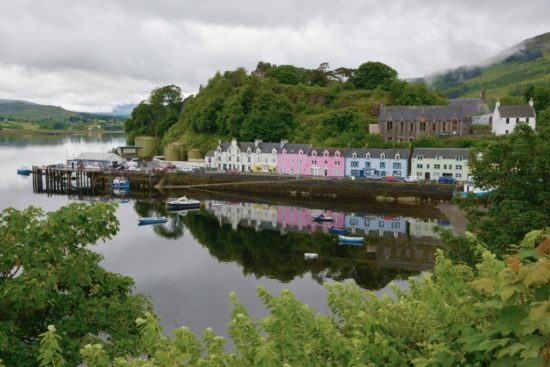
We headed over the bridge onto Skye and drove along the A87 towards Portree, the largest town on the Isle of Skye. Our accommodation was in Lephin, which had no nearby restaurants, so we decided to stop in Portree for dinner and a drink. The town has lovely views out across Loch Portree. There are a number of pubs and restaurants to choose from, but they do get very busy with bus loads of tourists all arriving at once for dinner. We had a reasonably early dinner, so got in just before the rush.
Although the island gets busy during the summer months, the roads are still reasonably quiet as a lot of tourists travel by bus, and there is not a lot of local traffic. Most of the roads, apart from near the main tourist spots, were be relatively quiet. We had a very pleasant drive from Portree to the village of Lephin where our accommodation was located. We had opted to stay here as we wanted to experience the remote peace and quiet of the island.
We stayed at the luxurious, but homely, Brae View B&B (I received no sponsorship to mention this B&B – these views are my own). The host Claire was an amazing cook and baker and absolutely spoiled us during our stay. She also helped us to plan how we were going to spend our time on the island, giving us lots of great recommendations.
Please note that there is very limited accommodation on Skye. Most only open during the summer months and they get booked out very early. Our host advised us that they had to remove the sign from their B&B as they would get desperate late night travellers knocking on their door seeking accommodation. Be aware that you can’t just arrive on Skye and expect to find accommodation, in fact many unprepared travellers end up having to sleep in their car.
Day 2: Exploring the Isle of Skye
The following day we headed out to Neist point lighthouse. The road was very narrow and rough, so we had to drive slowly. Once we got got there we found very little parking, so were relieved that we had made the effort to arrive early, as it is a popular tourist spot. By the time we left, cars were already piling up.
The path to the lighthouse was paved, but the first part of it was very steep so you do need to take care and have a reasonable level of fitness. Thankfully the weather was good, and we enjoyed a scenic walk amongst the sheep and the seabirds. It is very exposed along the dramatic cliffs, and was rather windy, so I recommend taking your jacket.
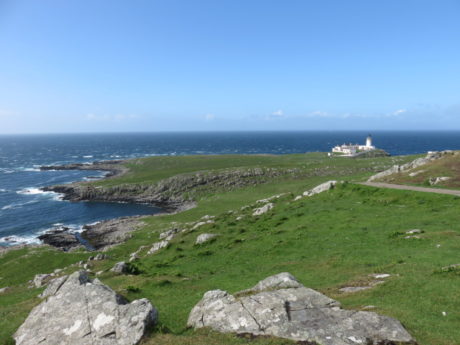
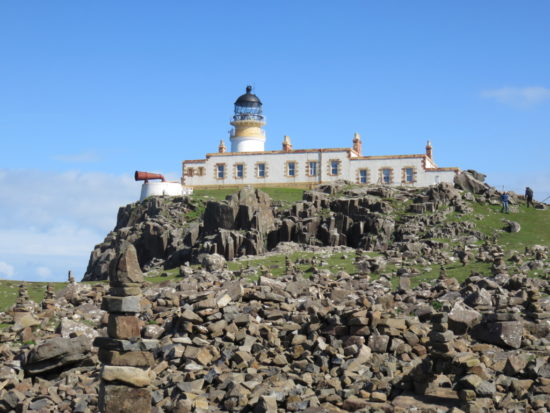
From the lighthouse we headed out to the enchanting Castle Ewan Fairy Glen, just outside of Uig. This place is a little tricky to find (but is on google maps). On the A87 you turn right onto an unnamed road just before the village of Uig. There is no actual castle, just fascinating pointed mounds and weird topography. We parked up as best we could (there is no official car park) and explored this interesting place.
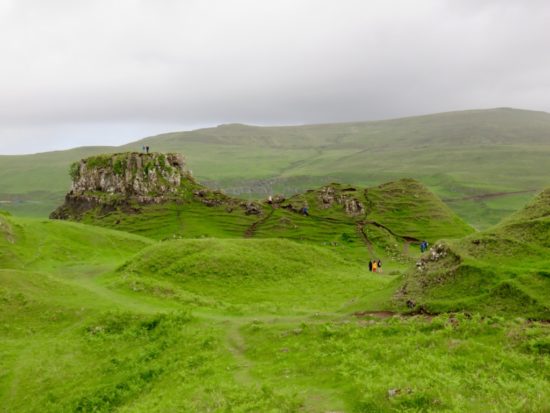
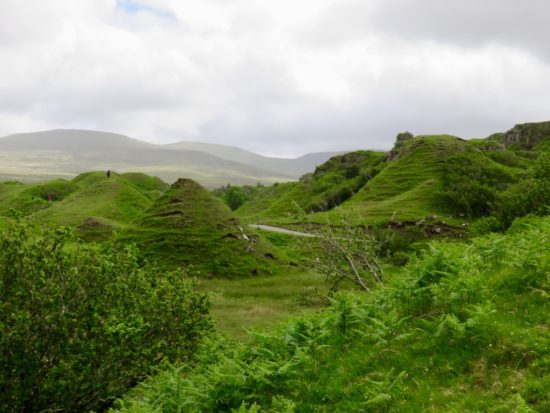
From here we continued north, driving around the A855. Despite being an A road, it was mostly single lane, but there were plenty of passing bays. It is a stunning coastal drive, so worth putting up with the road. This is where we got caught in some very heavy rain (a common occurrence here!) that swept across the island. We ended up pulling into a car park on the side of the road with stunning coastal views and sat it out.
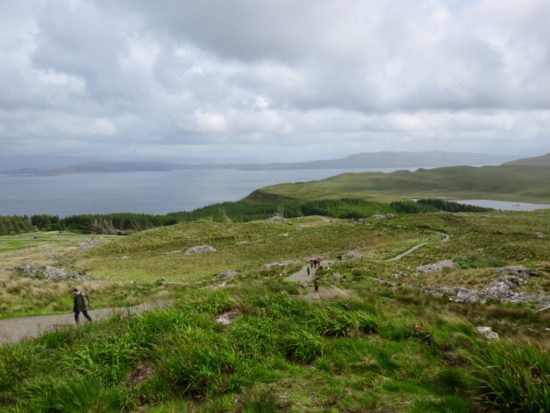
If you enjoy hiking, then the Quaraing Hill Walk and the Old Man of Storr are excellent. However, the Old Man of Storr does get very busy as it’s a popular tourist spot, and although there is good parking available along both sides of the road, it does get very crowded. There is a very steep path that takes you directly up the hill. The lower part was rather crowded, but we found that once we walked past the point where most tourists stop, it got much less busy. We managed to walk all the way to the top (a good way to work off the cooked breakfast) and we were rewarded with stunning views and a close up of the impressive rock formation. There are a number of other paths up there, so we ended up spending several hours exploring the area.

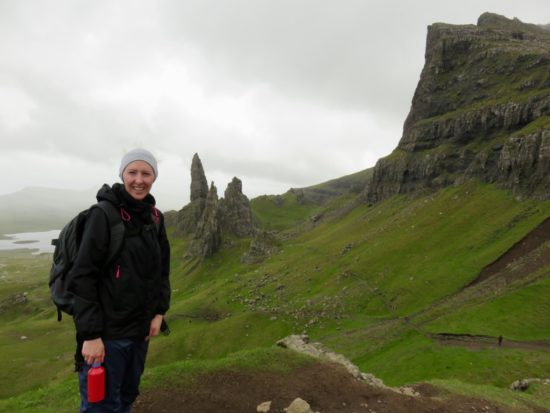
In the evening we headed to Stein Inn, the oldest pub on Skye, for dinner. Its a quaint old pub located in a cute hamlet and facing a lovely waterfront. It was a very peaceful spot and a lovely place to spend an evening on Skye.
Day 3: Final Day on the Isle of Skye
On the day we were scheduled to leave, we had reservations for lunch at the famous Michelin starred restaurant, The Three Chimneys. It’s famous for providing its diners with locally sourced food. It’s only a small restaurant, and very popular, so you need to book in advance which you can do online. If you are on a bit a budget, then opt for the lunch as it’s cheaper than dinner.
Before lunch, we made the most of our remaining time on the isle by enjoying a walk at the nearby Coral Beach in Claigan, just north of Dunvegan. From the carpark, there is a track that leads you down to the beach. It’s a lovely spot and if you’re lucky with the weather, the sun will come out and make it look like a little tropical beach.
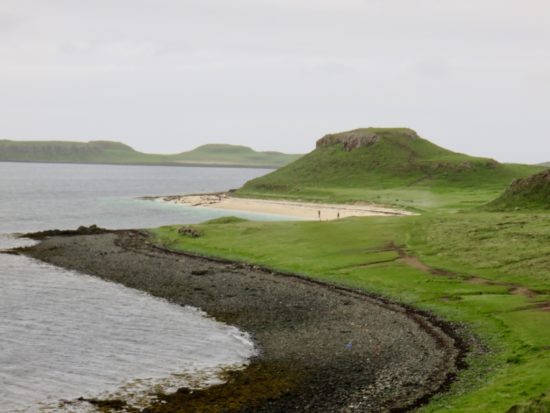
After our refreshing beach walk, we headed a short way up the road to Dunvegan Castle and Gardens. This is the seat of MacLeod, chief of the Clan MacLeod. You can also take a seal boat trip from here. But if you head down to the area where the boats leave from, you may be lucky to see them languishing in the water as we did.

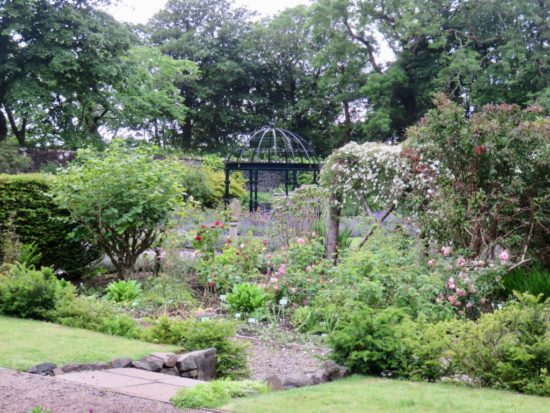
By this point we had built up quite an appetite for our delicious lunch. Our meal at Three Chimneys did not disappoint, it was absolutely delicious. I loved that the food was locally sourced. The meal was so rich that we ended up skipping dinner that evening.
Our final scenic drive was from the restaurant in Colbost, down along the B884 and onto the A863 until it eventually reached the A87 where we headed back across the bridge. We then headed towards Inverness along the mountainous A890 and A832 which you can read about here.
Accommodation Options in Isle of Skye
Be aware that accommodation is very limited on the isle, so you need to book in advance. If you want to really enjoy the natural surrounds of this wonderful isle, then I recommend staying out in the countryside like we did, rather than Portree.
Search available accommodation in Isle of Skye
Budget
Moderate
Luxury
 Essential Tips and Information to Plan Your Trip to Scotland
Essential Tips and Information to Plan Your Trip to Scotland
- How to get from mainland Scotland to the Isle of Skye: There are three ways to get to the Isle of Skye.
- Ferry from Mallaig to Armidale: It takes about 30 minutes and is reasonably priced. During the busy summer months, the ferry can book out, so it’s best to book ahead.
- Ferry crossing at Glenelg: It’s only about 600m so doesn’t take very long to cross.
- Bridge at Kyle of Lochalsh: This route is free.
- Language: English
- Currency: Pound sterling. Although Scotland print their own bank notes, you can use either Scottish notes or the usual English notes. Sometimes it can be difficult getting the Jersey bank notes accepted in the rest of the UK, so try not to carry large amounts and use them up before leaving.
- Tipping: Not required, but people usually round up.
- Electricity: The electrical current is 230 volts AC. Wall outlets take a three pronged plug only used in the United Kingdom and Ireland. However, you are better off purchasing a worldwide adaptor with USB ports that can be used in the United Kingdom as well other countries. At least then you can potentially get some further use out of it on future vacations. If you’re taking a number of electronics with you, then I would recommend purchasing a couple of these adaptors.
- Driving: In the UK they drive on the left hand side of the road with speed signs in miles per hour (mph).
- Navigating: We use Google’s free Offline Maps which allow you to access free maps for navigating that can be used offline i.e. you don’t need WIFI, data, or roaming to be able to use them. Follow my detailed guide on how to use Googles Offline Maps. Using your phone as a GPS will drain your battery quickly, so use a portable external battery charger which you can use to charge your phone and any other USB chargeable devices. If you prefer a paper map, then Lonely Planets Edinburgh Pocket Travel Guide comes with a helpful pull out map. At least it’s reliable and won’t run out of battery or malfunction like the electronic options.
- Fuel: Fuel is expensive in the UK, so save money by downloading a UK fuel app so you can search for the nearest petrol station with the cheapest fuel.
- Whiskey: There are a couple of nice distilleries that you can visit on the Isle of Skye, but if you don’t have time to visit one, then don’t worry. All of the local pubs and bars wherever you go offer a large selection to try. The staff are usually knowledgeable and can provide you some helpful advice on which ones to try based on your taste preferences and budget.
- Talisker Distillery, Carbost, IV47 8SR
- Torabhaig Distillery, Teangue, IV44 8RE
- Wondering what to pack? This is a list of essential items that I packed for my trip to Scotland. I originally used this list for my holiday in Ireland, being very similar locations.
- Weather: Scotland is known for its frequent and heavy rain fall which is what makes this place so green. If you are going to be hiking, then pack waterproof pants and jacket and wear hiking boots. It’s easy to get lost in the mountains, especially with the low cloud that can roll in, so be prepared, plan your hike, and use ordnance maps.
- Midges: In the warmer months midges can be a real problem, so pack some extra strong repellent. Before going to Scotland, I did my research online and found that Avon Skin So Soft Bug Guard with SPF 30 sunscreen is one of the most popular products used against Scottish midges. It seemed to do the trick for us and I loved that it is also a sunscreen, so I only needed to take the one product with us. Even though the weather can be very changeable in Scotland, you can easily get burnt in summer, so make sure you wear at least 30+ SPF sunscreen.

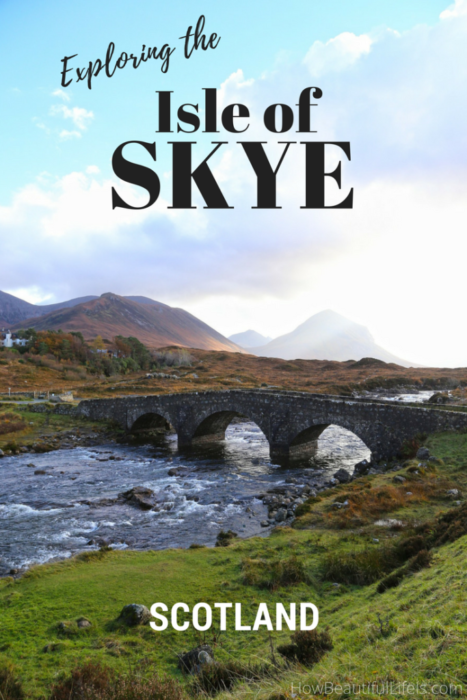
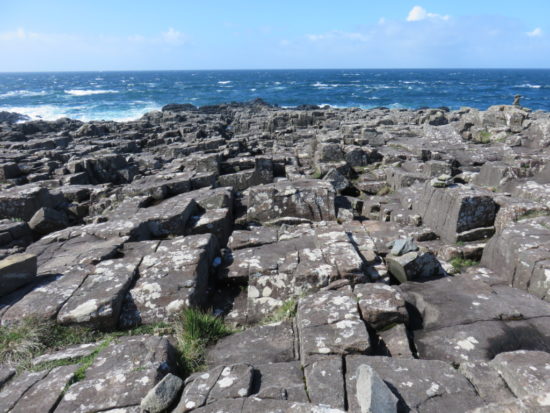

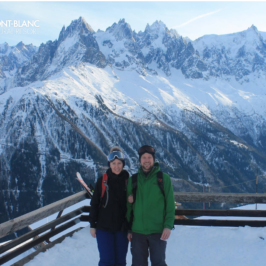
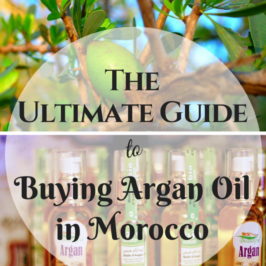
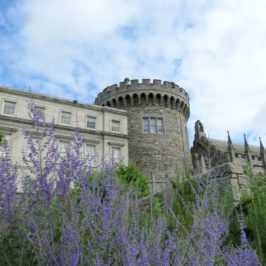
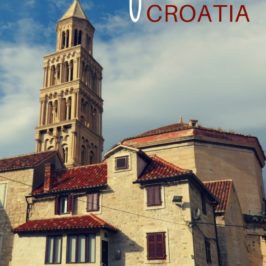
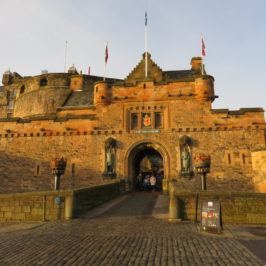

Leave a Reply